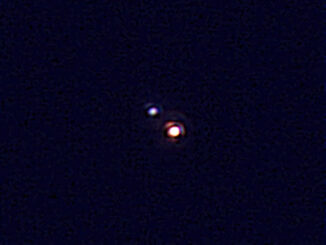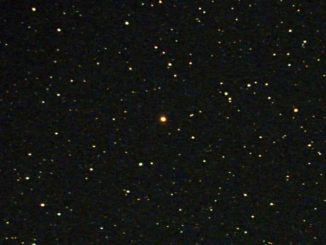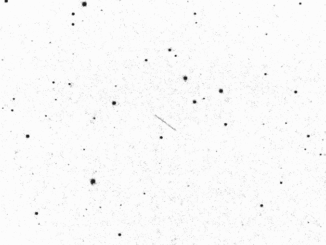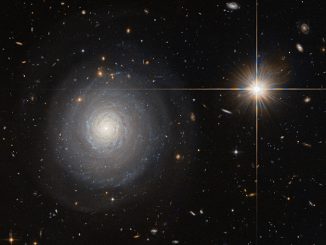
Hercules




Find Barnard’s Star, the Sun’s closest stellar neighbour visible from the UK
Barnard’s Star is a familiar name in both the history of astronomy and popular culture, but did you realise that it’s the closest stellar body to the Sun that you can see from the British Isles and similar latitudes? We tell you some fascinating facts about this famous runaway star and show you how to locate it.

Watch near-Earth asteroid 2017 CS dash across the northern sky 28 May—1 June
Five hundred-metre-wide asteroid 2017 CS passes just 1.9 million miles, or 7.9 lunar distances, from Earth on the afternoon of Monday 29 May 2017. For a few nights around this date, Northern Hemisphere observers with 6-inch and larger ‘scopes can see the asteroid gallop through the constellations of Canes Venatici, Boötes and Hercules at up to 14 degrees/day.

See a trio of comets in the April sky
Despite the glow of a waxing Moon, early April is a good time to catch a glimpse of comets 41P/Tuttle–Giacobini–Kresák and C/2015 V2 (Johnson) that are currently circumpolar and visible throughout the UK hours of darkness. And if you’re an early riser, there’s seventh-magnitude C/2017 E4 (Lovejoy) low in the pre-dawn eastern sky too!

See Comet 45P’s close brush with Earth in the pre-dawn sky
Comet 45P/Honda–Mrkos–Pajdušáková passes just 0.08318 astronomical units (7.73 million miles, or ~32 lunar distances) from Earth on the morning of 11 February. Early risers can catch the magnitude +7 comet speeding through the constellations of Hercules, Corona Borealis (CrB) and Boötes at up to 9 degrees/day.

Who stole all the stars?
Investigating the millions of missing stars from the centres of two big galaxies, researchers say they may have solved this cosmic whodunit — and the main culprits are not the usual suspects. While the astronomers confirm that one of the depleted cores is the largest ever detected, they report that it may not have formed in the manner previously thought.

Hubble sees a lonely starburst galaxy
This NASA/ESA Hubble Space Telescope image shows an isolated starburst galaxy named MCG+07-33-027. The galaxy lies some 300 million light-years away from us, and is currently experiencing an extraordinarily high rate of star formation — a starburst. Normal galaxies produce only a couple of new stars per year, but starburst galaxies can produce a hundred times more than that!

See Comet 252P/LINEAR in a moonless sky
On the afternoon of 21 March, Comet 252P/LINEAR brushed by Earth just 14 lunar distances away. The comet’s separation from Earth now exceeds 20 million miles, but it’s still a suitable target for binoculars and small telescopes — if you know exactly where to look. Here’s our UK observing guide for 252P/LINEAR in the constellation Ophiuchus between midnight and moonrise over the coming week.
